10 Best Adventures of 1972
By:
October 17, 2017
Forty-five years ago, the following 10 adventures — selected from my Best Sixties (1964–1973) Adventure list — were first serialized or published in book form. They’re my favorite adventures published that year.
Please let me know if I’ve missed any 1972 adventures that you particularly admire. Enjoy!
- John Brunner’s New Wave sci-fi adventure The Sheep Look Up. Brunner wrote a lot of forgettable pot-boilers, and a couple of terrific books — this proto-cyberpunk eco-catastrophe is one of the latter. Raw materials are running out, and insects and micro-organisms have become resistant to efforts to eradicate them. Disaster could be averted if world governments and the wealthy were willing to make sacrifices; instead, the rich live obliviously in gated communities while the right-wing US administration, headed by an idiot president, is in thrall to corporations seeking only to maximize shareholder value. The media, meanwhile, focuses on entertainment and delivers fake news. Environmental and social-justice activists are dismissed as un-American hippies. (Yes, it’s almost too prescient.) We learn all of this through fractured vignettes about multiple characters, headlines, reports. As both government and corporate services break down, and as food is poisoned, rioting and civil unrest sweep the United States. Fun fact: The novel’s title is a quotation from Milton’s “Lycidas.” “The hungry sheep look up, and are not fed,/But swollen with wind and the rank mist they draw,/Rot inwardly, and foul contagion spread…”
- Hunter S. Thompson‘s picaresque Fear and Loathing in Las Vegas. Subtitled A Savage Journey to the Heart of the American Dream, Thompson’s first novel follows its protagonist, drug-addled journalist Raoul Duke, and his attorney, Dr. Gonzo, as they descend on Las Vegas. Duke is supposed to report on a motorcycle race for a sports magazine; instead, he and Dr. Gonzo trash hotel rooms, drive around hallucinating in the desert, and bitterly lament the failure of the ’60s counterculture to challenge America’s depraved social order and capitalist economy. It’s a kind of manifesto of the Anti-Anti-Utopian Generation — idealistic, yet skeptical about both the established order and those who’d challenge it. (“What Leary took down with him was the central illusion of a whole life-style that he helped create… a generation of permanent cripples, failed seekers….”) This is also a journey into the surreal, as Vegas’s fantastical appurtenances are rendered nightmarish. Fun facts: Fear and Loathing (as it’s usually known) first appeared as a two-part series in Rolling Stone magazine in 1971. Ralph Steadman’s grotesque illustrations accompanied both the Rolling Stone serialization and the novel.
- Ursula K. Le Guin‘s Earthsea fantasy adventure The Farthest Shore. In the final installment of the original Earthsea trilogy (there would eventually be four books in the series), the planet faces an existential crisis: the magic is leaking out of it, into a kind of black hole — and with the magic is going all courage and conviction, not to mention songs, craftsmanship, and joy. The archmage Ged, whose life and career as a wizard we’ve being following, is now on the elderly side; he and Arren, his young princely sidekick, head out in the Lookfar to investigate. They discover that a powerful dark mage, who has made his home among the dragons on Earthsea’s westernmost island, is promising life after death… even if that means destroying the world. A slow-moving adventure, with philosophical musings — but Le Guin is a wonderful philosopher, so the book is a page-turner. Fun fact: Winner of the 1973 National Book Award for Young People’s Literature.
- Peter Dickinson’s YA historical adventure The Dancing Bear. When barbarous Huns attack Byzantium, they carry off Ariadne, a wealthy young woman. Sylvester, a young slave in Ariadne’s household, bravely journeys into Hun territory on rescue mission. (He is also fleeing powerful Byzantines who know that he witnessed their treachery.) Our hero is accompanied by Holy John — a dirty, epileptic, narcissistic household saint, who wants to convert the Huns — and by Bubba, the dancing she-bear. Holy John’s interpretations of God’s wishes often save the day; and he is able to persuade the Hun’s leader that Bubba is an incarnation of the Holy Spirit. Bubba, too, is a wonderful, loving, loyal character — the best bear in literature? Readers young and old will appreciate Dickinson’s self-deprecating humor regarding the effort of conjuring up a historical era in all its social, cultural, political complexity. Fun fact: Dickinson published almost fifty books, including one of the best YA sci-fi series of all time: The Changes trilogy (1968–1970).
- Michael Moorcock’s Cornelius Chronicles adventure The English Assassin. The third of Moorcock’s four novels featuring dandy, scientist, rock star, and adventurer (Buckaroo Banzai, eat your heart out) Jerry Cornelius is subtitled A Romance of Entropy. This is true in two senses: Cornelius is an agent of the cosmic force that opposes culture, civilisation, empire, religion, and other manifestations of order; and the book itself is entropic — a pastiche of stories working at cross-purposes. Cause and effect are out of whack, here; ambiguity is the whole point. Unlike running, jumping, shooting action heroes, Jerry Cornelius is an idler; at the beginning of The English Assassin, he is fished out of the ocean — dead (eat your heart out, Jason Bourne) — and he can barely be bothered to get out of bed, despite such goings-on as a nuclear attack on India and a Scottish war of independence fought with zeppelins… each apocalyptic scenario set on a different version of the Earth. He does stop a peace conference — violently — though. We spend a lot of time with Cornelius’s coterie, including the titular assassin (IMHO) Una Persson. The book’s message, if any, is delivered by Catherine: “Goodbye, England.” Fun fact: The Cornelius Quartet includes The Final Programme (1968), A Cure for Cancer (1971), and The Condition of Muzak (1977). There are other Cornelius stories, too.
- Victor Cannings’s occult/crime adventure The Rainbird Pattern. I’m a big fan of Canning’s late thrillers — including Firecrest (1971), The Finger of Saturn (1973) and The Doomsday Carrier (1976) — in which cops are ruthless, and crooks sympathetic. The Rainbird Pattern is usually described as Canning’s masterpiece. It’s a tightly plotted puzzle in which Bush, an agent of the British government, attempts to foil the efforts of “Trader,” a gang which has kidnapped and ransomed influential politicians (and now has its sights set on the Archbishop of Canterbury); and in which Julia Rainbird, an elderly and wealthy spinster thinking about making Edward, her long-lost illegitimate nephew her heir, hires Blanche, a fraudulent medium, to help her track Edward down. Blanche and her unscrupulous but amusing boyfriend, George, start snooping around for the Rainbird heir… which leads them to succeed where Bush failed. The consequences for all concerned are dramatic… and there’s a mind-blowing twist at the end. Fun fact: The 1976 comedy thriller Family Plot, Hitchcock’s last movie, was adapted from The Rainbird Pattern. The film — set in California — stars Karen Black, Bruce Dern, Barbara Harris, and William Devane.
- Trevanian’s sardonic espionage adventure The Eiger Sanction. Dr. Hemlock, an art professor and mountaineer, who doubles as a hired “counter-assassin” for a secret government agency (headed by a sinister albino), and who collects stolen artwork as a hobby, intends to retire from the “sanctions” business. However, he’s cajoled into a hazardous effort that takes him first to Montreal, and then embroils him an attempt to scale the north face of the Eiger — one of the most treacherous peaks in the Swiss Alps. Which member of the climbing team is the assassin that Hemlock must kill… and how will the Eiger climb reveal that crucial intel? An intentionally ludicrous effort that still manages to be thrilling, when you’re not scratching your head. Fun facts: Rodney Whitaker was a University of Texas, Austin, film scholar who wrote best-selling thrillers — including The Loo Sanction (1973), The Main (1976), and Shibumi (1979) — as “Trevanian.” The Eiger Sanction, his first novel, was adapted as a 1975 movie starring Clint Eastwood.
- Richard Adams’s talking-animal Argonaut Folly adventure Watership Down. An Aeneid-like epic in which a ragtag band of rabbits escape the destruction of their warren and journey across south-central England in search of a new home. Their unlikely leader is Hazel, whose main concern was to protect his oddball (visionary) brother Fiver; the charismatic star of the story is the gruff, tough rabbit Bigwig. These unlikely misfits encounter predators, snares, and automobiles; and they must elude the Owsla — the security force of their own warren, sent to fetch them back. Though the ever-growing group is tempted to join a couple of un-free rabbit societies, Hazel, Fiver, and Bigwig are fiercely determined to start their own warren… which they finally do, at Watership Down, a hill in the north of Hampshire. However, they need does — which leads them into more perilous adventures. And in the end, they must survive an attack led by Woundwort, the monstrous leader of a rival warren. Throughout, we hear inspirational excerpts from the lapine mythology of El-ahrairah the trickster. Fun facts: Adapted into the 1978 animated film Watership Down. In April 2016 it was announced that the BBC and Netflix would produce a four-part series based on the novel.
- Ishmael Reed‘s apophenic, Afrofuturist adventure Mumbo Jumbo. Before Snow Crash and even Gravity’s Rainbow, Mumbo Jumbo conjured up a mythos around “Jes Grew,” an ancient, infectious virus/meme which — spread by certain Negro musicians, in Prohibition New York — influences people to listen to ragtime and jazz, dance, worship more than one god, and otherwise cast off the shackles of a repressive social order. White westerners, since ancient times, have sought to suppress this tendency — as part of their successful effort to subjugate and alienate the other peoples of the world. (The book itself — whose format is disrupted by radio dispatches, photographs, typographic excesses, drawings and collages, footnotes, even anti-Vietnam War protests — seems infected by a disruptive virus of sorts.) PaPa LaBas, a Harlem voodoo practitioner, and his companion Black Herman, are drawn into the conflict against… western culture itself. If the plot flounders a bit, that’s OK — Reed’s ideas and prose style are an adventure. Fun fact: The Afrofuturist visionary musician George Clinton has cited Mumbo Jumbo as a primary source of inspiration for his P-Funk mythology.
- Anthony Price’s espionage adventure Colonel Butler’s Wolf. Historian-turned-spy David Audley is not the protagonist of the third installment in Price’s so-called Dr. David Audley series (1970–1989). Another counter-intelligence agent from the Ministry of Defence’s Research and Development Section — the gruff, tough Colonel Jack Butler — is at the center of the action, this time, while Audley pulls strings from behind the scenes. In fact, Audley is using Butler as a decoy, to flush out a deep-cover Soviet agent… and a diabolical plot to undermine England’s intelligence services. Something is rotten at Oxford University, so Butler must go undercover as a military historian and sniff around; in a way, then, this is a rare hybrid of a spy thriller with a campus novel! The action later moves to Hadrian’s Wall, where Butler must contend not only with a KGB agent but Oxford’s misguided student demonstrators. A short but very satisfying yarn; I’ve re-read it several times. Fun fact: Previous titles in this series: The Labyrinth Makers (1970) and The Alamut Ambush (1971).
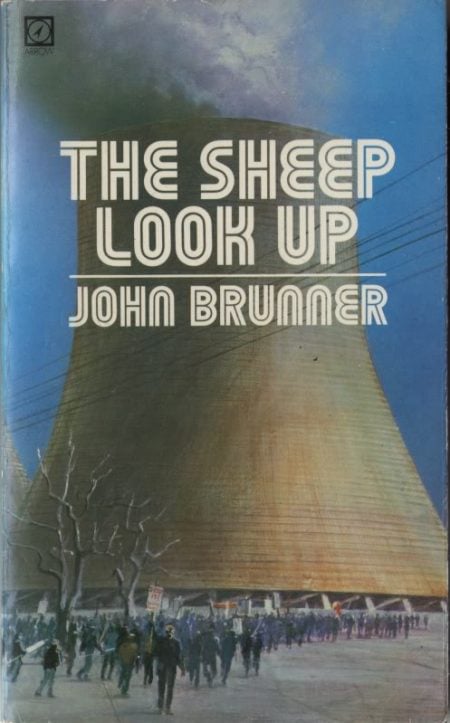
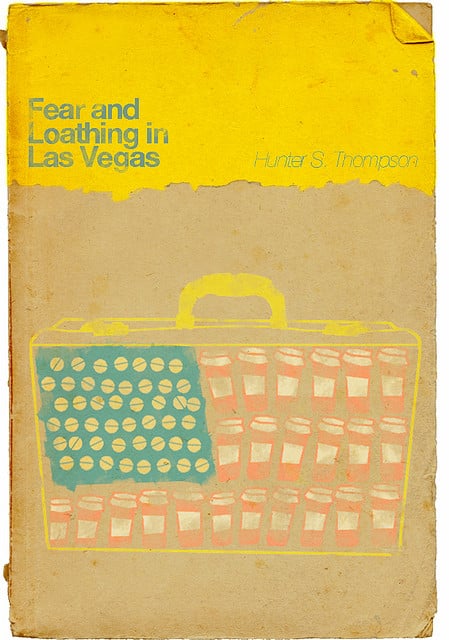
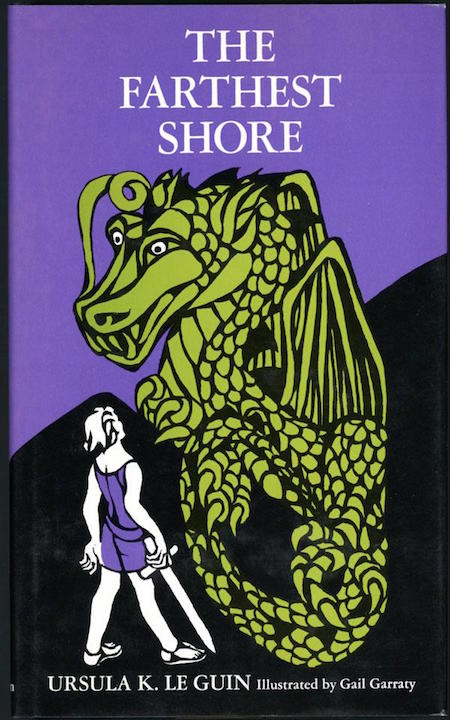
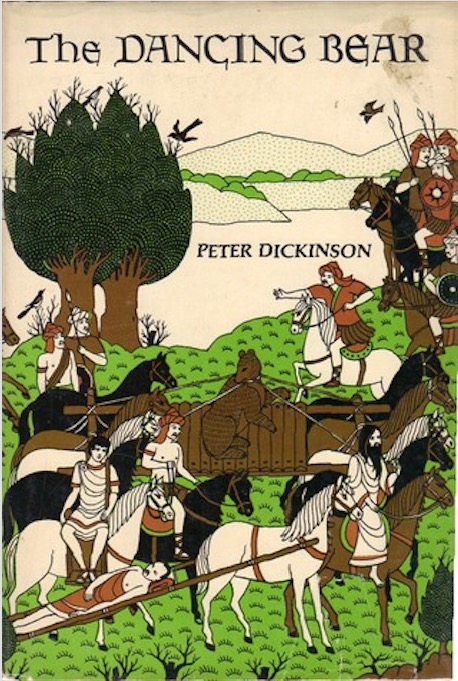
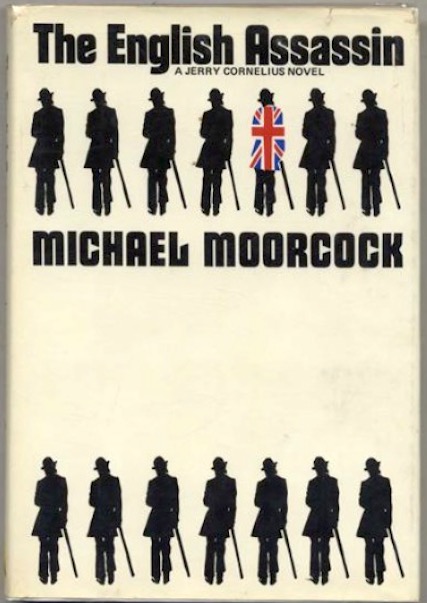
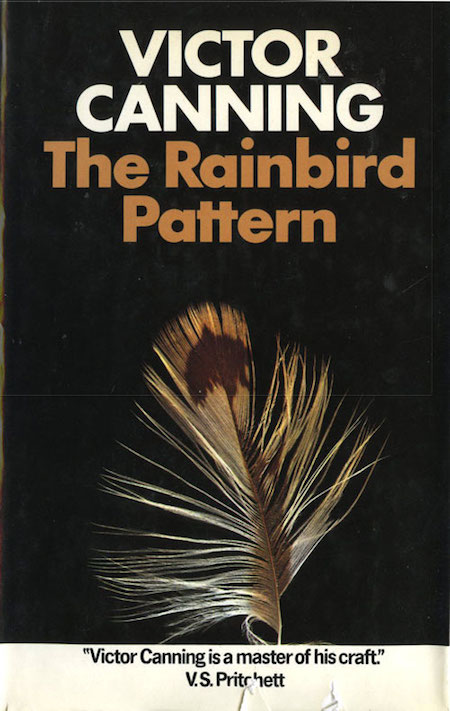
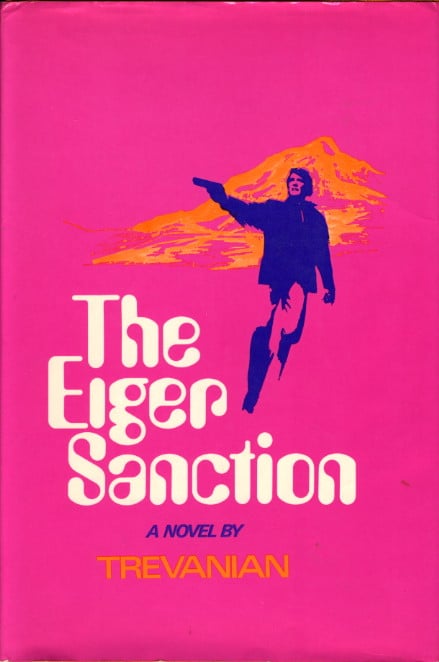
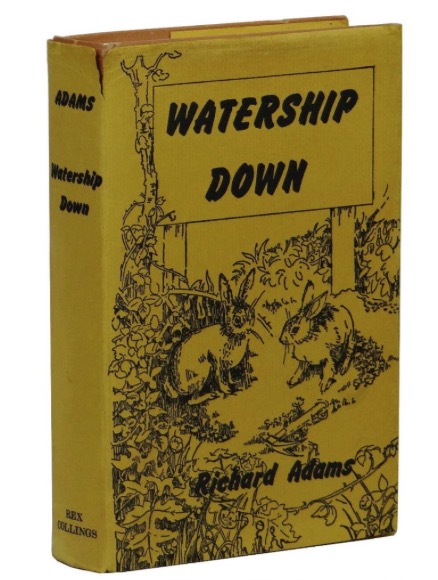
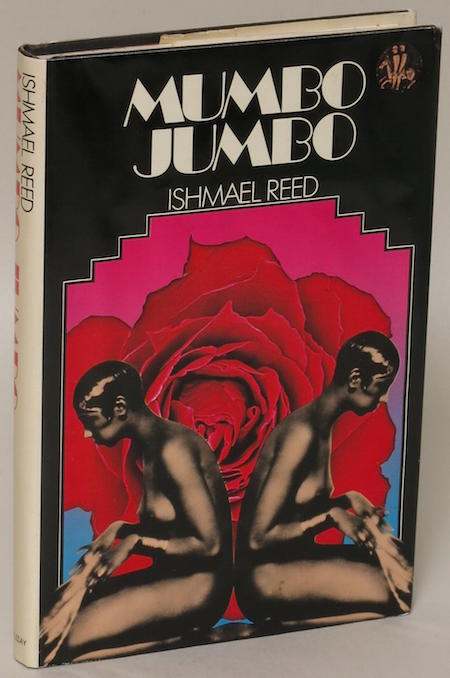
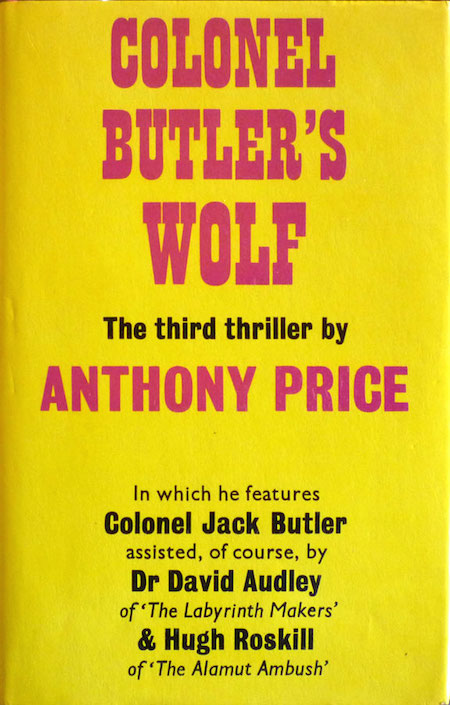
JOSH GLENN’S *BEST ADVENTURES* LISTS: BEST 250 ADVENTURES OF THE 20TH CENTURY | 100 BEST OUGHTS ADVENTURES | 100 BEST RADIUM AGE (PROTO-)SCI-FI ADVENTURES | 100 BEST TEENS ADVENTURES | 100 BEST TWENTIES ADVENTURES | 100 BEST THIRTIES ADVENTURES | 75 BEST GOLDEN AGE SCI-FI ADVENTURES | 100 BEST FORTIES ADVENTURES | 100 BEST FIFTIES ADVENTURES | 100 BEST SIXTIES ADVENTURES | 75 BEST NEW WAVE SCI FI ADVENTURES | 100 BEST SEVENTIES ADVENTURES | 100 BEST EIGHTIES ADVENTURES | 75 BEST DIAMOND AGE SCI-FI ADVENTURES | 100 BEST NINETIES ADVENTURES (in progress) | 1994 | 1995 | 1996 | 1997 | 1998 | 1999 | 2000 | 2001 | 2002 | 2003 | NOTES ON 21st-CENTURY ADVENTURES.
